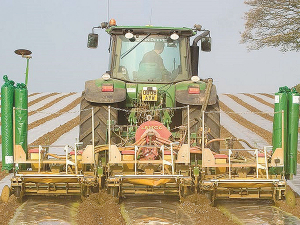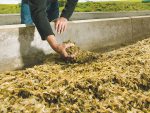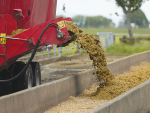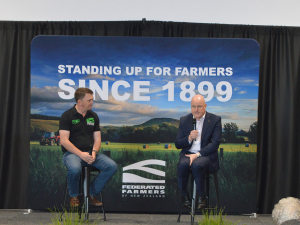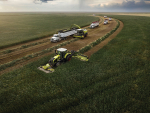While starting forage maize under biodegradable plastic has been about for a while in the UK, particularly in marginal areas of the north and west, new research is showing that the practice can have major effects on both maize quality and financials.
Trials run by crop production specialists Hutchinsons in 2020 showed that profit margins could increase by up to $5,800 per hectare from improved crop quality and increased milk output.
The results showed a 4.4 tonne per hectare increase in total dry matter over a "conventionally" grown crop, with those results backed up over in Ireland, where Teagasc reported a 3 tonne per hectare increase in DM per hectare and a 6-10% starch advantage over conventionally grown crops.
Jim Clark, an agronomist at Hutchinsons, suggested that farmers should not get too hung up on fresh weight tonnages, but focus on overall feed value including dry matter and starch levels.
"Increasingly, growers in the UK use film at planting as an insurance policy, as it almost guarantees a half decent crop, regardless of weather or location," says Clark.
"Starting plants off under film is akin to planting seedlings in a glasshouse - ideal for accelerating germination, better early growth and the ability to bring forward harvesting dates, which often take place during the onset of bad weather."
Alongside an increase in quality and overall yield, the practice is also said to offer: reduced soil erosion, protection against bird strike on emerging seedlings, a more consistent crop and the opportunity, from earlier harvest, to plant another crop before heading into winter.
The agronomist suggests that a discussion is needed to understand which varieties are best suited to the technique, alongside the timing of planting that, in most cases, can be brought forwards by two to three weeks. The same applies to soil temperature, with the target for conventional planting normally around 10 degrees C, whereas crops germinated under film can be planted at around 8 degrees, as the film creates a greenhouse effect.
Clark points out that good seedbed preparation is essential with any maize crop not favouring compacted ground. Noting that maize is a "hungry" crop, he recommends a ph of 6.3 to 6.5, 10 to 15kg/ha of nitrogen in the seedbed at planting and a typical P and K requirement of 55kg and 175kg per ha respectively.
Growing under film also requires a good pre-emergence spray for weed control, so with most sprays being pendimethalin-based and effective for 3-5 weeks, there also needs to be enough moisture under the film.
In practice, the film typically lasts about seven weeks before the maize starts to push through, at which point a post-emergence spray is needed to target late germinating weeds.
Starting maize off under film obviously has increased costs over conventional planting - typically $505 hectare, made up of film at $451 and increased contractor costs.
The total cost of growing a crop (seed, film, sprays and fertiliser) is typically around $1,135, to which contractor costs (plough, subsoil, cultivate, drill, spray, fertiliser application and harvest) typically adds $943 per hectare to give a total cost of $2,080 per hectare.
In contrast, outputs of 16, 18 and 20 tonnes per acre fresh weight, with maize valued at GBP35/tonne delivers gross margins of 314, 486 and 659 respectively. Looking at the costs benefits of maize under film, Pioneer P 7326 delivered 11.36 tonnes DM/ha with an ME of 11.1.
The film grown crop of the same variety yielded 16.03 tonnes DM/ha and an ME value of 11.7. In terms of milk output, it was calculated that the open field crop would deliver 24,336 litres/ha, while the film-grown crop would yield 35,381 l/ha. With the average milk price for the 2020 season at $0.54 cents per litre, this delivers gross returns of $13,268 and $19,266 respectively (*at time of writing 1GBP equals NZ$1.945).





